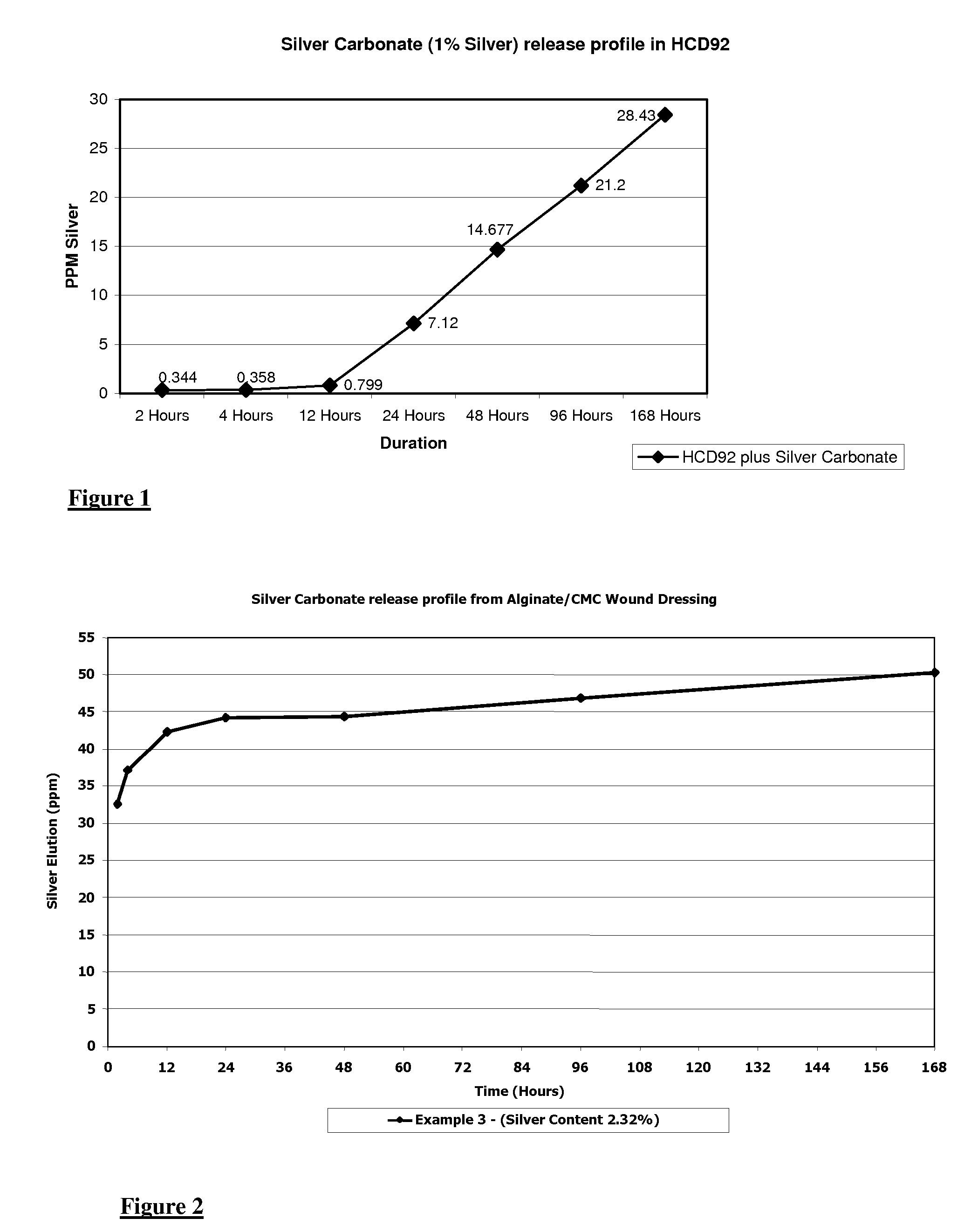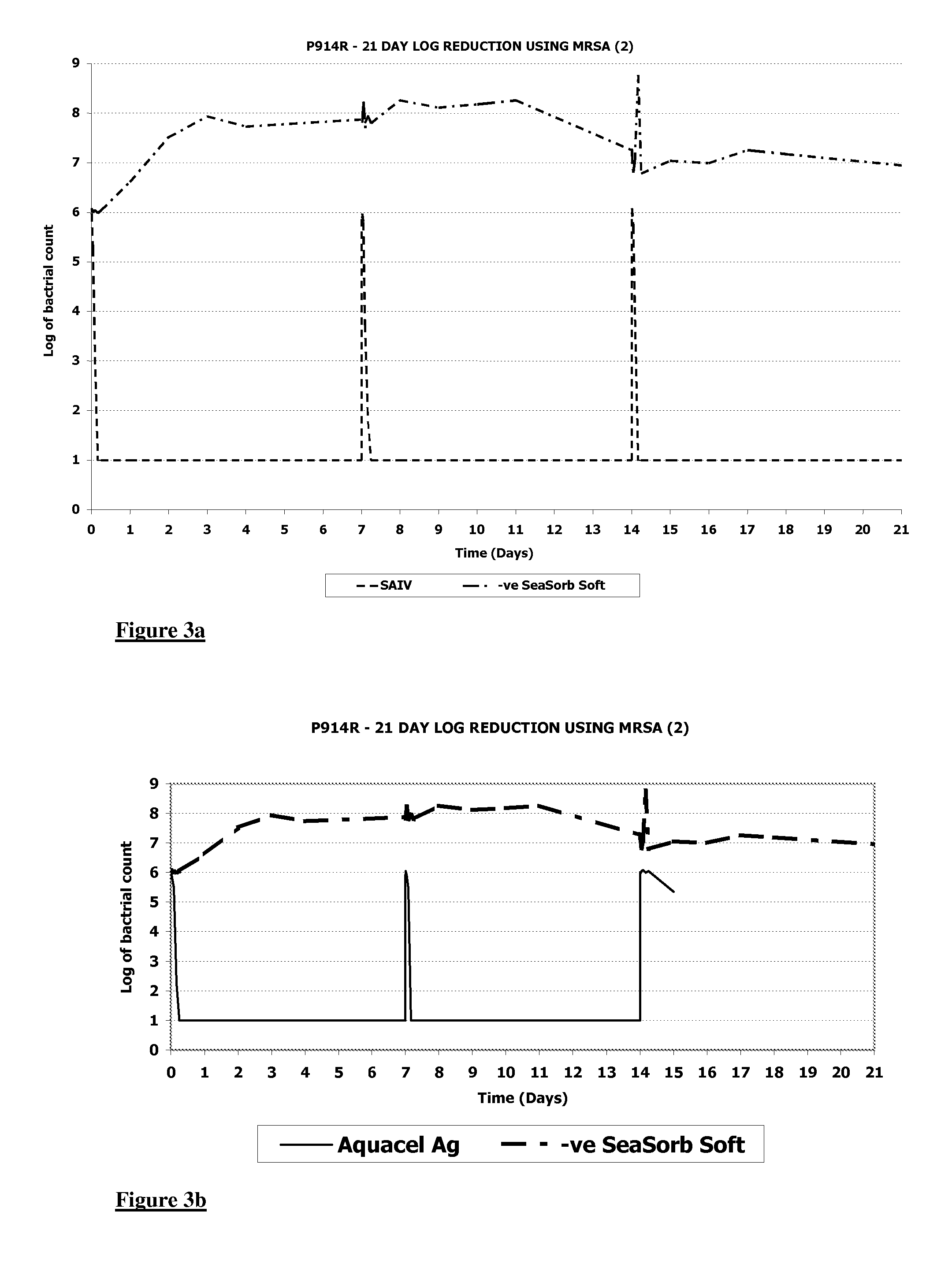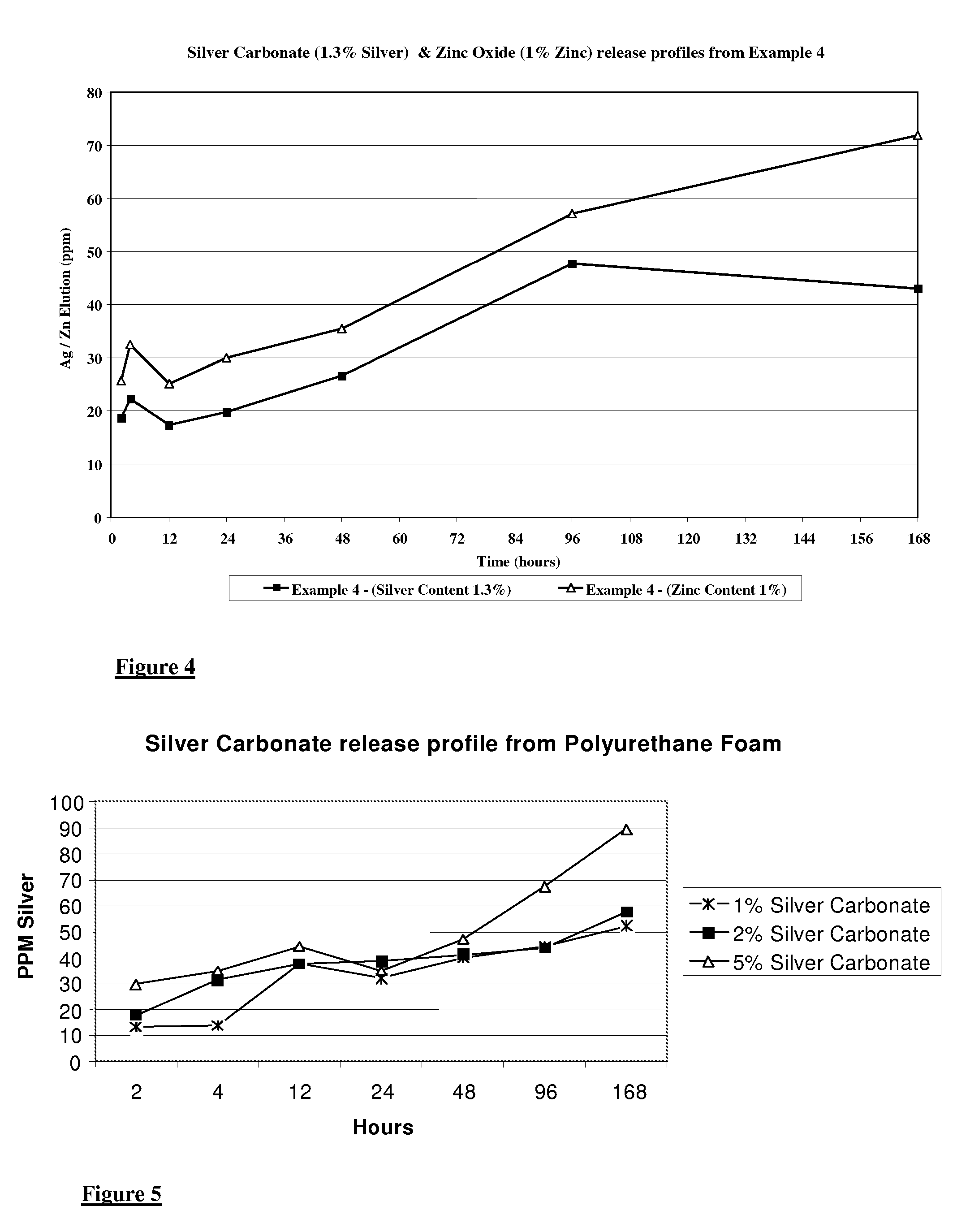Wound dressings
a technology of wound dressing and silver-containing components, which is applied in the field of wound dressings, can solve the problems of large amount of complexes and high cost of complexes, and achieve the effects of less cost of silver-containing components, less complex structure, and less complex structur
- Summary
- Abstract
- Description
- Claims
- Application Information
AI Technical Summary
Benefits of technology
Problems solved by technology
Method used
Image
Examples
example 1
Silver Hydrocolloid
[0057] This Example describes the production testing of a hydrocolloid wound dressing material in accordance with the invention.
Preparation
[0058] A hydrocolloid wound dressing was prepared from the following components:
ComponentAmount (g)SBS Block Copolymer125Pectin92.5Carboxy Methyl Cellulose150Butylated Hydroxytoluene2.5Purified Powdered Cellulose20Mineral Oil10Polyisobutylene100Silver Carbonate7
[0059] The above components were added to a 1 Litre Winkworth Z-blade mixer which was then started and heated to 70° C. After 15 minutes, the temperature of the mix was checked and confirmed to be 70° C. A sample of the mix was also taken at 15 minutes and pressed to a flat sheet having a thickness of about 0.4 mm. A visual inspection confirmed the uniformity of the flat sheet. After a total of 30 minutes mixing, temperature of the mixture was again confirmed to be 70° C. and the mix was found to be uniform.
[0060] Mixing was terminated after 30 minutes and the res...
example 2
Silver Alginate / CMC Fibres
[0065] The Example describes the production of fibres comprised of a mixture of sodium / calcium alginate and carboxymethyl cellulose (CMC).
Preparation
[0066] An aqueous spinning dope was prepared containing 6% by weight of the following formulation:
Component% By WeightSodium Alginate85%CMC13%Silver Carbonate2%
[0067] The alginate used was a High M (Mannuronic acid, 60% M) material which was selected because it is highly absorbent and forms a soft gel with wound exudates. The CMC improves the absorbency and speeds fluid uptake to allow an increased rate of gelling action.
[0068] The dope was prepared by initially mixing the silver carbonate with water until the silver compound was fully dispersed. The CMC and sodium alginate were then mixed with the water and silver carbonate until uniform. The dope was allowed to stand to allow air bubbles to escape.
[0069] The dope was filtered to remove large particles (filter size nominally 30 microns) and then pumped...
example 3
Silver Alginate / CMC Fibres
[0076] The procedure of Example 2 was followed but using an aqueous spinning dope containing 6% by weight of the following formulation:
Component% By WeightSodium Alginate 92%CMC4.25%Silver Carbonate3.75%
[0077] The resultant wound dressings were highly absorbent.
[0078] The silver content as measured by the procedure described in Example 1 was found to be 2.32%.
[0079] Silver elution was measured as described in Example 1 and the results are shown in FIG. 2.
[0080] The ability of the dressings to control MRSA (Methicillin Resistant Staphylococcus Aureus) was evaluated using a 21 Day Log Reduction method as detailed below.
[0081] Wound dressing pieces having a size of approximately 1.5 cm×1.5 cm were added to a flask containing 20ml of simulated wound fluid (SWF). Having the formulation described in Example 1.
[0082] 0.2ml of a suspension of the MRSA at a nominal level of 1.0×108 cfu / ml was added, giving a nominal level of 1.0×106 cfu / ml in the SWF. This ...
PUM
| Property | Measurement | Unit |
|---|---|---|
| diameter | aaaaa | aaaaa |
| particle size | aaaaa | aaaaa |
| particle size | aaaaa | aaaaa |
Abstract
Description
Claims
Application Information
 Login to View More
Login to View More - R&D
- Intellectual Property
- Life Sciences
- Materials
- Tech Scout
- Unparalleled Data Quality
- Higher Quality Content
- 60% Fewer Hallucinations
Browse by: Latest US Patents, China's latest patents, Technical Efficacy Thesaurus, Application Domain, Technology Topic, Popular Technical Reports.
© 2025 PatSnap. All rights reserved.Legal|Privacy policy|Modern Slavery Act Transparency Statement|Sitemap|About US| Contact US: help@patsnap.com



